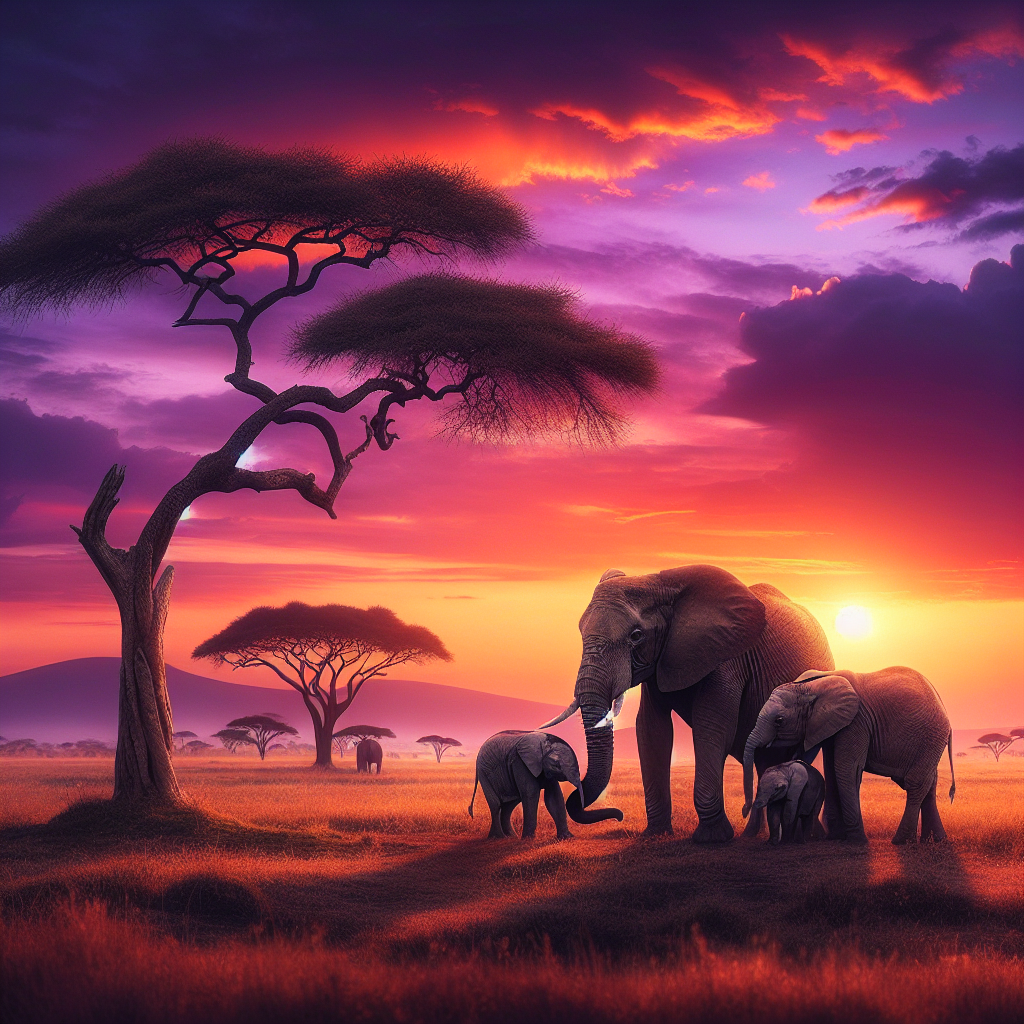The Majestic Giants: Exploring the Lives and Habits of Elephants

The Majestic Giants: Exploring the Lives and Habits of Elephants
In the vast tapestry of wildlife that adorns our planet, few creatures command as much awe and admiration as elephants. Revered as symbols of wisdom, strength, and tranquility, these majestic giants have fascinated humans for centuries. Beyond their impressive size and gentle demeanor, elephants possess complex behaviors and social structures that make them among the most intriguing animals on Earth. This article delves into the lives and habits of elephants, exploring their fascinating world and the challenges they face in the modern era.
The Gentle Giants of the Animal Kingdom
Elephants are the largest land animals on the planet, comprising three distinct species: the African savanna elephant, the African forest elephant, and the Asian elephant. With ears that resemble giant fans, long tusks that curve gracefully, and trunks that are as versatile as they are powerful, elephants are unmistakable.
Their size is matched only by their intelligence. Renowned for their memory and problem-solving abilities, elephants display a range of emotions—from joy and playfulness to grief and compassion. These cognitive and emotional capabilities contribute to their complex social structures, which are often matriarchal. The oldest and often the wisest female leads the herd, guiding her family through migrations and teaching vital survival skills.
Intricate Social Structures
Elephant society is intricate and nuanced. Herds typically consist of related females and their offspring, with males leaving the group upon reaching adolescence. These young bulls then form loose bachelor groups or lead solitary lives, only returning to the herd for mating seasons.
Communication within the herd is key to maintaining social bonds. Elephants utilize a diverse vocabulary of vocalizations, from trumpets and rumbles to infrasonic calls that travel long distances. They also communicate through body language and tactile interactions, such as entwining trunks or placing a reassuring touch on a grieving family member’s back.
Pneumatic Precision: The Elephant’s Trunk
The elephant’s trunk is a marvel of nature—a combination of upper lip and nose that contains over 40,000 muscles. This remarkable appendage is incredibly versatile, capable of uprooting a tree or delicately picking a single blade of grass. It serves numerous purposes: breathing, smelling, touching, grasping, and producing sound. Elephants use their trunks for drinking by sucking water partway up before pouring it into their mouths.
Habitat and Diet
Elephants have a varied diet, primarily consisting of grasses, leaves, fruits, and bark. As herbivores, they spend about 16 hours a day consuming large quantities of food, which can total up to 300 pounds. This immense dietary requirement underscores their role as ecological engineers. As they travel, elephants uproot trees and trample vegetation, shaping the landscape and facilitating the growth of new plant life.
Their habitats range from the savannas, forests, and deserts of Africa to the jungles and grasslands of Asia. Each environment presents unique challenges, influencing their migratory patterns and behaviors.
The Threats They Face
Despite their formidable presence, elephants face numerous threats. Human activities—including habitat destruction, poaching for ivory, and conflicts over land—pose severe risks to their survival. Climate change further exacerbates these challenges, altering habitats and disrupting migratory routes.
Conservation efforts are underway worldwide to protect elephant populations. Strategies include anti-poaching initiatives, habitat restoration, and community engagement programs that promote coexistence between humans and elephants.
Conclusion
In exploring the lives and habits of elephants, we uncover a world rich with intelligence, emotion, and social complexity. These majestic giants remind us of the interconnectedness of all living things and the importance of preserving the natural world. As stewards of the planet, it is our responsibility to ensure that future generations can also marvel at the splendor and grace of these extraordinary creatures. Only through collective effort and compassion can we secure a future where elephants continue to roam the wild landscapes they have called home for millennia.